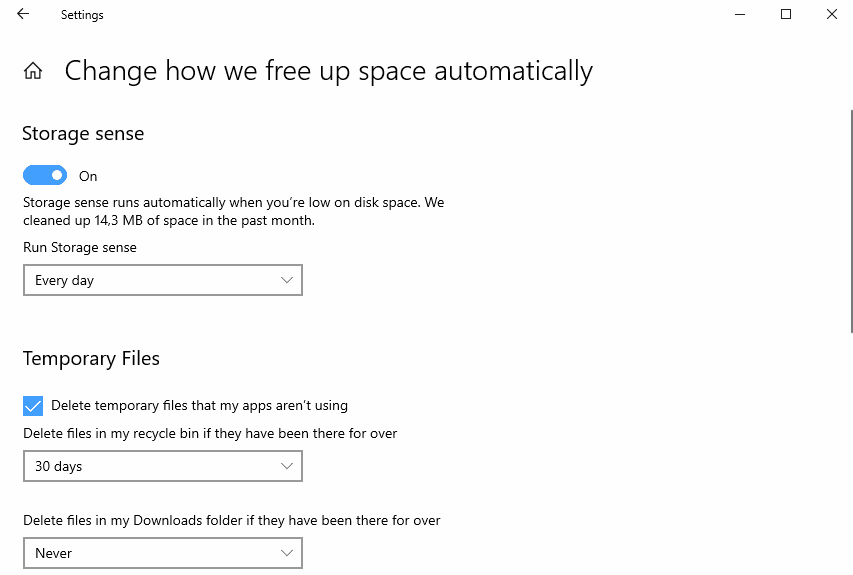Microsoft confirms Disk Cleanup tool deprecation in Windows 10
Microsoft announced plans to deprecate the classic Disk Cleanup tool in Windows 10 on the official Windows and Windows Server storage blog.
When Microsoft released Windows 10 it made its intentions clear that it wanted to move away from classic tools such as the Control Panel. No one imagined that it would take the company that long to do so.
Only some Control Panel applets and tools have been migrated so far to the Settings application or were published as UWP applications; Windows users and administrators still juggle between the Settings app and the Control Panel, and while Microsoft makes it harder with every release to access the Control Panel, it looks as if it will be remain a part of Windows 10 for a long time.
A new build of Windows 10 version 1809 showcased new Storage Sense functionality in April 2018. Basically, what Microsoft did back then was to copy functionality provided by the classic Disk Cleanup toll (cleanmgr.exe) to a new "Free up Space now " section in the Settings app.
Windows 10 users can access it by launching the Settings app on the device with the shortcut Windows-I, and by selecting System > Storage > Free Up Space Now". The feature was integrated in Windows 10 version 1803, the April 2018 Update.
While Disk Cleanup is still available in Windows 10 version 1809, it is only a matter of time before the tool is removed from default Windows 10 installations.
Storage Sense improvements

Storage Sense, a feature to remove old and unused files automatically when enabled, supports new functionality in Windows 10 version 1809 to automate processes further.
Storage Sense is turned off by default. It can be enabled under Settings > Storage, and configured with a click on "Change how we free up space automatically" on the same page.
We reviewed the initial functionality of Storage Sense when it launched in Windows 10 version 1803. Back then, it was limited to deleting temporary files, unused files in the download folder or the Recycle Bin.
Functionality of Storage Sense is improved in Windows 10 version 1809:
- Run Storage Sense once per day, week, or month, or whenever disk space gets low.
- Set a minimum age for temporary files and files in the download folder that you want Storage Sense to remove automatically (between never and 60 days).
- Make content in the OneDrive folder "online-only" to free up disk space.
If you enable Storage Sense to run on the device automatically, it will process files automatically and based on your rules. It will clean up the following file and data types automatically when enabled:
- Temporary Internet cache, system, and system cache files.
- Device Driver packages.
- Temporary Setup files.
- Old indexed content.
- Old Windows Update temporary files.
- Dump files.
- Dated system log files.
If you enable the clean up of the Downloads folder or OneDrive, these are processed as well based on the configuration in the Settings app.
Closing Words
The classic Disk Cleanup tool was never the best tool for the job but it was built-in and easy to use.
Third-party solutions like CCleaner support its functionality and more, and while that meant that you had to install or run a third-party app on a device, it was often the better choice for users.
The removal of the Disk Cleanup tool will certainly be disruptive even though its functionality has been replicated in the Settings app. The option to clean up space automatically may appeal to users as the classic Disk Cleanup tool came without integrated options to run it regularly on the system.
Now You: Do you use Disk Cleanup?
This article was first seen on ComTek's "TekBits" Technology News

- Log in to post comments